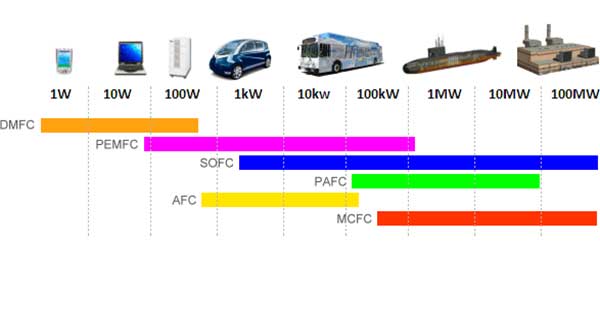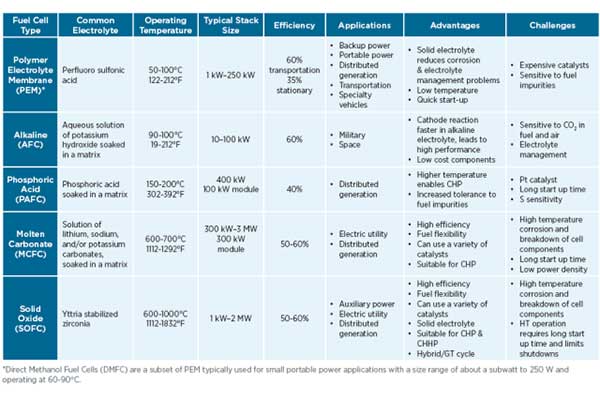Towards A Cleaner & Sustainable Future

Cutting edge technology &
products for the energy sector
⦁ Focus Sectors – Sustainable & Clean Energy Solutions
Advantage 
-
The Miracle Fuel for Sustainable Energy
- Hydrogen is a chemical element that is rarely available in a naturally free state. Hydrogen gas is colorless, odorless, tasteless and non-toxic. In India, hydrogen is mainly produced using Steam Methane Reforming and Membrane Cell Technology.
- A large share of hydrogen produced in India is by Steam Methane Reforming. In this process, a high temperature steam under the range, 700°C–1,000°C, is used to produce hydrogen from methane source, such as natural gas. Methane reacts with steam under 3-25 bar pressure in the presence of a catalyst to produce hydrogen and other by-products.
- Wide flammability range, more than 6 times wider than methane.
- Low ignition energy, about 20 times less than methane.
- High flame speed, about 8 times faster than methane.
- Powerful reducing agent and combustion stimulant.
Background – Cause for Sustainable & Energy Free H2 Generation
-
The Miracle Fuel for Sustainable Energy
- Hydrogen is among the most abundantly available elements in our universe. It is present in the atmosphere in a gaseous state, albeit in miniscule concentration - less than one per million by volume.
- It is commonly produced when natural gas is heated with steam, which, in turn, produces syngas - a mixture of carbon monoxide and hydrogen.
- Alternately, hydrogen can be produced by electrolyzing water as well.
- Demand for clean fuel is projected to witness exponential increase every year, with rising pollution levels. Stringent government regulations to control sulfur content in fuels are expected to drive the market in near future.
- According to the Environmental Protection Agency (EPA), annual production of hydrogen was pegged at over 50 million tons. It can be generated from an extensive range of initial raw materials, including the most commonly used technology like steam reforming of natural gases.
- This process leads to enormous amounts of greenhouse gas emissions.
- About 50% of international demand for hydrogen is presently satisfied by steam reforming (SMR), close to 30% is fulfilled from naphtha or oil reforming in refinery or industrial off-gases, about 17% is done by coal gasification, and the remaining is done by water electrolysis and other sources.
- In agriculture, hydrogen is used to produce ammonia by the Haber process, along with methanol and cyclohexane, which are also used to produce pharmaceuticals and plastic. Hydrodesulphurization of fuels in oil refining process is a catalytic chemical reaction used to reduce sulfur from petroleum products including gasoline or petrol, kerosene, jet fuel, fuel oils, diesel, and natural gas. Desulphurization is used to create fuels including ultra-low-sulfur diesel, with a view to curb sulfur dioxide emission from aircrafts, automotive vehicles, ships, railroad locomotives, and oil or gas power plants, among various other forms of petroleum combustion.
Current Methods of H2 Generation are Highly Energy Dependent which causes it to loose the Clean Fuel Tag & also becomes Commercially Un-viable for Mass Market Adoption.

Hydrogen as a Clean Fuel Source
The quest for a high energy clean fuel stops with Hydrogen.
Hydrogen has one of the highest energy density vis-à-vis other energy source.
Hydrogen – 120 MJ/Kg
Gasoline – 43 MJ/Kg
As an added benefit when burnt it causes Zero Emission, the only residues being water & heat; which again can be used for constructive purposes.
In-Grid Solution
More than a billion people are without electricity inspite of the rapid technological advancement humans have made.
To tackle the deficiency, base power source with efficient Fuel Cell Generators can be a plausible solution for the back up grid & stand alone power requirement for industry & household.


On-site Industry
Solution for Mobile Towers & remote locations in the form of Stand Alone Hydrogen Fuel Cell Generators for continuous & uninterrupted power supply.
General On-Site Gensets are fuelled by highly polluting diesel.
Zero emission clean HFC can be a viable solution.
Mobility Industry
98% of the transport system are powered by ICE, using hydrocarbons
as fuel.
Focus on alternate fuels in the form of H-CNG, Bio-Methane,
Ethanol & HFCEVs are being explored as the current grid cannot
support the entire EV population if at all it shifts.
Besides 70% of the energy utilized in generating electricity are still
sourced from thermal & gas based plants, which are highly
polluting.

CO2 Free Hydrogen Infrastructure Concept

Fuel Cell Applications

Fuel Cell Types


